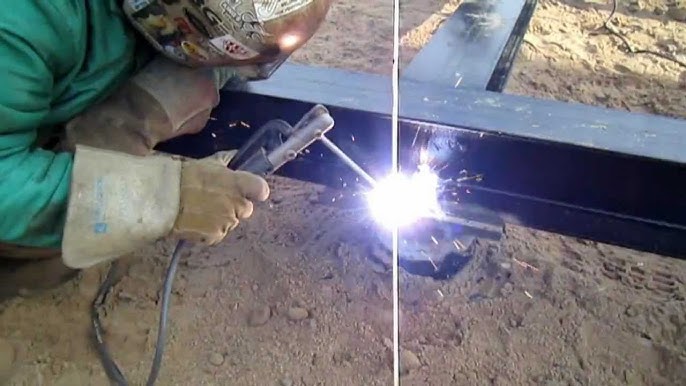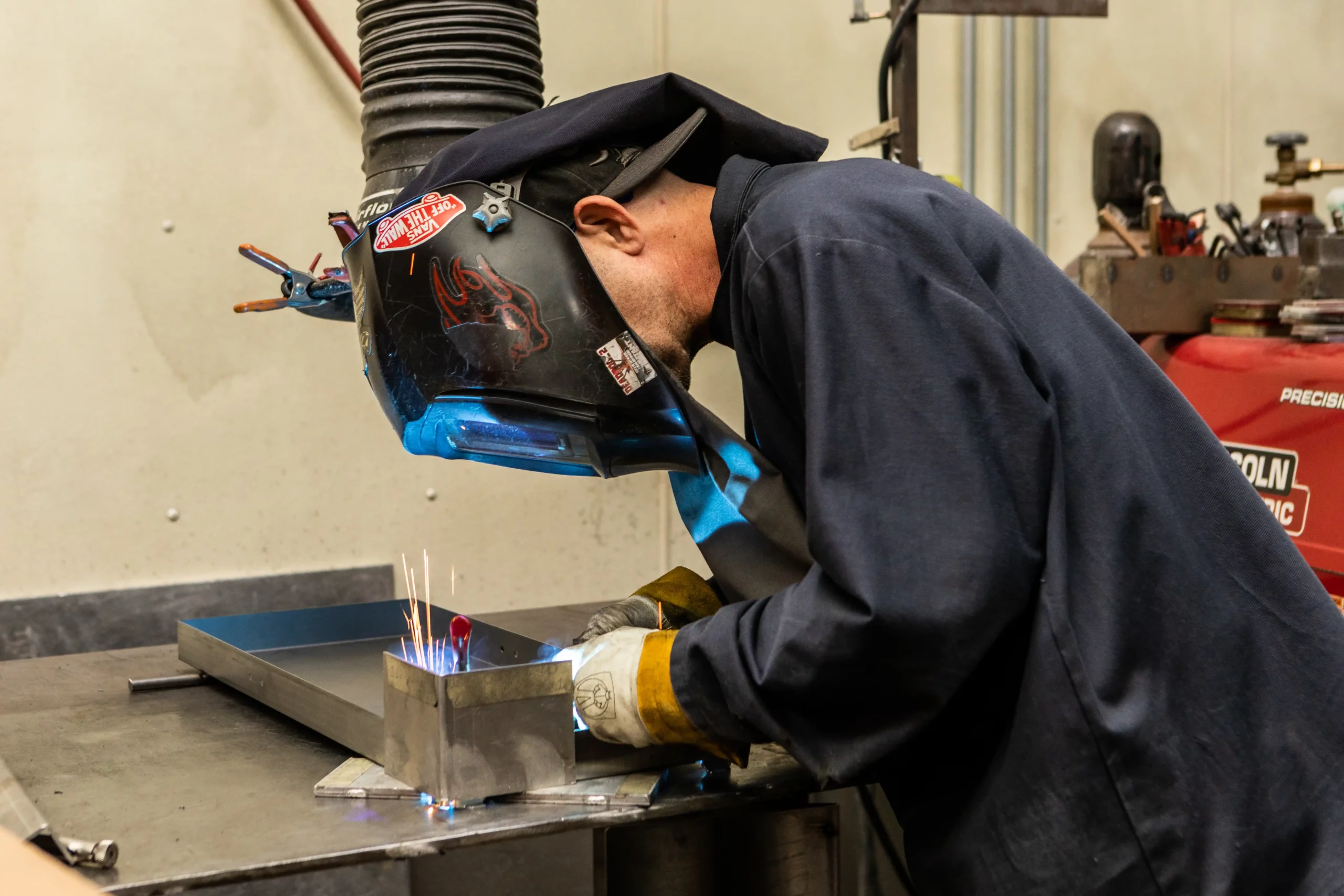Typical Welding Fixing Issues and Exactly How to Address Them Efficiently
Welding repair work commonly run into a series of concerns that can endanger the integrity of the end product. Usual issues consist of poor penetration, porosity, and imbalance, among others. Each flaw provides distinct difficulties that require particular techniques for resolution. Recognizing these issues is vital for welders aiming to enhance their outcomes and abilities. This conversation will certainly check out these common welding fixing issues and efficient techniques to resolve them.
Inadequate Infiltration
Inadequate infiltration happens when the weld steel fails to completely fuse with the base material, resulting in weak joints and possible architectural failings. This concern often stems from inadequate warmth input, incorrect electrode angle, or improper welding rate. Welders might experience poor penetration due to a mistake of the required parameters for a specific material density or kind. In addition, contamination on the base product's surface can impede effective bonding, worsening the trouble. To resolve inadequate penetration, welders must guarantee ideal setups on their devices and keep a clean job surface area. Regular examination of welds is advised to identify any shortages early, enabling for prompt improvements and the prevention of jeopardized architectural honesty in bonded assemblies.
Porosity
Porosity is an usual problem in welded joints that manifests as small gas bubbles trapped within the weld steel. This flaw can endanger the honesty of the weld, resulting in lowered strength and possible failing under anxiety. Montana Mobile Welding and Repair Welding. Porosity generally occurs from contamination, moisture, or inappropriate welding techniques, which permit gases to run away into the liquified weld swimming pool. To attend to porosity, welders must ensure proper surface area prep work, maintain a clean workplace, and use ideal welding specifications. In addition, choosing the right filler product and shielding gas can minimize gas entrapment. Routine inspection and screening of welds can assist determine porosity early, ensuring prompt rehabilitative activities are taken, thus maintaining the quality and dependability of the bonded structure
Misalignment
Misalignment in welding can develop from numerous elements, consisting of improper arrangement and thermal growth. Understanding the origin is necessary for reliable resolution. A number of modification methods are available to realign components and assure structural stability.
Root causes of Misalignment
Welding imbalance often comes from a selection of underlying issues that can jeopardize architectural integrity. One primary reason is inappropriate fit-up of parts before welding, which can result in spaces and uneven surfaces. Variations in thermal growth during the welding process can additionally lead to distortion, specifically if the materials being signed up with have different coefficients of expansion. Furthermore, inadequate clamping and fixturing may stop working to hold components firmly in area, bring about movement throughout welding. Inadequately conserved equipment, including welding makers and tools, may introduce disparities in the weld bead, further contributing to misalignment. Driver error, stemming from not enough training or experience, can also play a substantial role in creating misaligned welds.

Modification Methods Offered
Attending to misalignment properly requires a mix of corrective methods customized to the particular problems available. One usual approach is making use of fixtures or jigs to hold parts in the right setting during welding, making certain consistent placement. Additionally, pre-heating the materials can help in reducing distortion and enhance fit-up. For substantial misalignment, mechanical adjustment methods, such as using hydraulic jacks or clamps, can be utilized to fix the placement prior to welding. Post-weld heat treatment may also be required to relieve tensions brought on by imbalance. Mindful evaluation and modification during the arrangement stage can prevent imbalance concerns from becoming significant problems, promoting a smoother welding procedure and boosting total architectural stability.
Distortion
Distortion is an usual obstacle in welding that can occur from numerous variables, consisting of unequal home heating and air conditioning. Comprehending the root causes of distortion is important for applying effective prevention methods. Addressing this issue not just enhances structural integrity yet also enhances the total top quality of the weld.
Reasons of Distortion
When based on the intense heat of welding, materials typically undertake adjustments that can result in distortion. This sensation mostly occurs from thermal growth and contraction throughout the welding process. As the weld location warms up, the material increases; upon air conditioning, it contracts, which can produce interior tensions. On top of that, irregular heating throughout a workpiece can worsen these stress and anxieties, causing warping or flexing. The type of product also plays a substantial duty; steels with differing thermal conductivity and coefficients of growth might react in different ways, bring about uncertain distortions. Furthermore, inadequate joint design and inadequate fixturing can add to imbalance during welding, boosting the chance of distortion. Recognizing these causes is vital for effective welding fixing and prevention strategies.
Prevention Techniques
Reliable avoidance strategies for distortion during welding emphasis on regulating heat input and making certain proper joint style. Maintaining a consistent warm input assists to reduce thermal growth and contraction, which can lead to distortion. Utilizing methods such as pre-heating the workpiece can likewise reduce the temperature slope, promoting uniform home heating. Additionally, selecting appropriate joint layouts, such as T-joints or lap joints, can boost stability and lower tension focus. Applying proper fixturing to secure the work surfaces in area even more help in keeping positioning during the welding process. Ultimately, staggered welding sequences can disperse heat a lot more equally, stopping local distortion. By using these techniques, welders can greatly decrease the chance of distortion and improve the total top quality of their welds.
Splitting
Breaking is a typical issue run into in welding repairs, frequently arising from numerous variables such as inappropriate air conditioning rates, material choice, or inadequate joint preparation. The event of splits can considerably compromise the honesty of the weld, causing possible failings throughout operation. To resolve this problem, welders have to initially evaluate the root causes, guaranteeing that products are suitable and appropriately chosen for the particular application. Furthermore, controlling the air conditioning rate throughout the welding procedure is necessary; fast cooling can induce stress and lead to cracking. Correct joint layout and preparation also add to decreasing the risk. Executing these methods can improve weld quality and toughness, eventually decreasing the possibility of fracturing in completed weldments.

Insufficient Blend
A substantial concern in welding repair work is insufficient combination, which occurs when find this the weld steel does not properly bond with the base product or previous weld passes - Montana Mobile Welding and Repair Belgrade. This defect can cause weak points in the joint, possibly jeopardizing the honesty of the bonded framework. Elements adding to incomplete combination consist of insufficient heat input, improper welding method, and contamination of the surface areas being joined. To resolve this problem effectively, welders must ensure appropriate pre-weld cleaning and surface preparation, in addition to readjust their welding criteria to attain sufficient penetration and fusion. Regular examination during the welding process can also assist recognize insufficient combination early, permitting for timely rehabilitative measures to boost the overall top quality of the weld
Overheating
While welding repair work can boost structural honesty, overheating provides a considerable difficulty that can bring about product deterioration. Extreme heat during welding can change the mechanical properties of metals, leading to minimized strength, boosted brittleness, and warping. This sensation is particularly critical in high-stress applications where structural reliability is critical. Identifying getting too hot can include aesthetic inspections for staining or distortion, as well as keeping an eye on temperature level throughout the welding procedure. To alleviate the dangers related to overheating, welders should utilize appropriate strategies, such as regulating heat input, changing traveling rate, and using suitable filler materials. In addition, executing pre- and post-weld warmth therapies can assist recover material residential properties and boost the general quality of the fixing, making certain long-lasting performance and security.
Regularly Asked Questions
What Are the Typical Indications of a Welding Flaw?

How Can I Examine My Welds for High quality?
To check welds for quality, one can make use of visual evaluations, ultrasonic screening, and radiographic techniques. Each strategy assures architectural honesty, recognizes problems, and confirms adherence to defined criteria, inevitably boosting the integrity of the bonded joints.
What Safety and security Precautions Should I Take While Welding?
When welding, one should focus on safety and security by using ideal individual safety equipment, making certain appropriate air flow, securing flammable products away, preserving a tidy work area, and knowing surroundings to stop accidents and injuries.
Can I Repair a Weld Without Redesigning the Entire Joint?
Repairing a weld without redesigning the whole joint is feasible, relying on the damage (Montana Mobile Welding read more and Repair Belgrade Fabrication). Methods such as grinding, adding filler material, or making use of a welding process can efficiently attend to particular defects while preserving the bordering structure
What Equipment Are Essential for Efficient Welding Repairs?
Necessary devices for efficient welding repair work include a welding device, cable brush, mill, protective equipment, clamps, and filler products. Each device plays a vital duty in guaranteeing quality and safety during the repair process. Porosity usually emerges from contamination, moisture, or incorrect welding techniques, which permit gases to leave right into the liquified weld pool. Inadequately conserved devices, consisting of welding machines and devices, may present inconsistencies in the weld grain, more contributing to misalignment. When subjected to the intense warm of welding, products typically undertake adjustments that can lead to distortion. Cracking is an usual issue experienced in Your Domain Name welding fixings, usually resulting from numerous factors such as improper air conditioning rates, product choice, or poor joint prep work. A significant issue in welding repair services is insufficient blend, which takes place when the weld metal does not properly bond with the base product or previous weld passes.